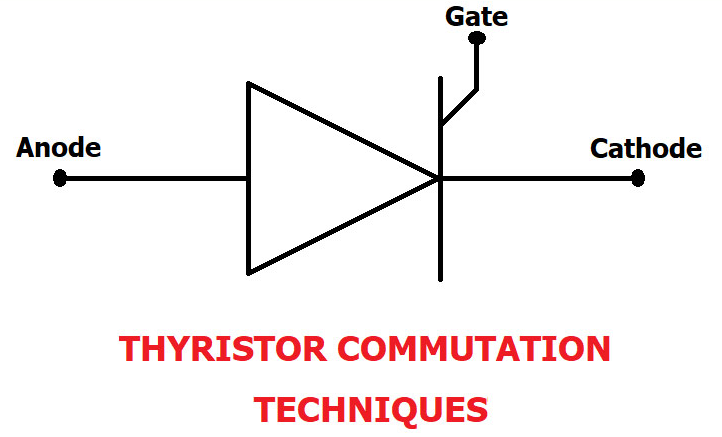Commutation Techniques
Line Commutation and Forced Commutation Circuits
Once thyristors operate in the ON state, carrying forward current, they can only be turned OFF by reducing the current flowing through them to zero for sufficient time to allow the removal of charged carriers. The process of turning OFF the thyristor is called commutation.
In ac circuits, when the current in the SCR goes through a natural zero and a reverse voltage appears
across the SCR, the SCR will be turned OFF. This type of turned-OFF process of SCR is called natural or line commutation. In natural commutation, there is no requirement for external circuits to turn OFF the SCR. For example, class-F commutation is a natural commutation. This type of commutation is used in single-phase and three-phase controlled rectifiers, ac voltage controllers and cyclo-converters.
In the case of d.c. circuits, for switching off the thyristors, the forward current should be forced to be zero by means of some external circuits. The process is called forced commutation and the external circuits required for it are known as commutation circuits. The components (inductance and capacitance) constituting the commutating circuits are called commutating components. A reverse voltage is developed across the device by means of a commutating circuit that immediately brings the forward current in the device to zero, thus turning off the device. The classification of the methods of forced commutation is based on the arrangement of the commutating components and the manner in which zero current is obtained in the SCR. There are different forced commutation methods. Based on the arrangement of commutation circuit components and the manner in which zero current is obtained in the SCR, forced commutations are classified as the following:
- Class A Commutation or Resonant Commutation
- Class B Commutation
- Class C Commutation
- Class D Commutation
- Class E Commutation
- Class F Commutation
latest video
news via inbox
Nulla turp dis cursus. Integer liberos euismod pretium faucibua







